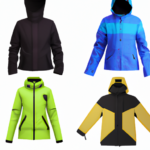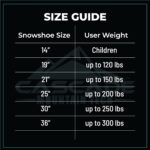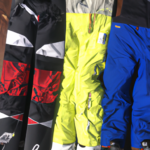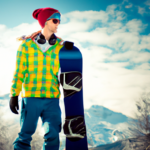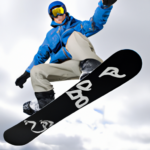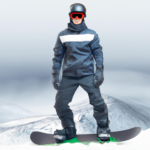Finding the perfect balance between comfort, warmth, and functionality when layering for snowboarding can be quite a challenge. We often consider the jackets, snowboard pants, or the heat tech snowboarding gear but seldom think about what goes under those thick snowboarding pants. You may be surprised that your choice of underlayer could drastically affect your performance and experience on the slopes. So, let’s get down to it, let’s talk about what you should wear under your snowboard pants.
Understanding the Importance of Proper Snowboarding Undergarments
When it comes to snowboarding, the gear you wear under your snowboard pants plays a significant role in your comfort, mobility, and overall performance on the slopes. It might not be as flashy as your outer gear, but it’s every bit as essential.
Why base layer matters
The base layer is the first layer of your snowboarding gear and serves as your second skin. It works to keep your skin dry by wicking away sweat and moisture, which can cause you to become cold and uncomfortable. A good base layer will enhance your comfort and performance by keeping uncomfortable chills at bay, allowing you to focus on your snowboarding skills.
Cocoon of warmth: How undergarment keeps you secured
Snowboarding undergarments act as a warm cocoon, trapping a layer of warm air next to your skin and keeping the cold out. These excellent insulators ensure you stay toasty from lift to landscape, even in freezing conditions – essential when you’re gliding down a frosty mountain.
Moisture management and breathability
Apart from providing warmth, snowboarding undergarments also play an integral part in moisture management. As you exert yourself on the slopes, your body will undoubtedly perspire. The best undergarments have high breathability, meaning they allow this sweat to evaporate, keeping you dry and comfortable.
The Anatomy of Snowboarding Pants
Snowboarding pants aren’t like regular pants; they’re packed with features to help you tackle those winter elements.
Different parts of snowboarding pants
Snowboarding pants often feature an outer shell, insulation, and inner lining. Other essential parts include reinforced kneepads for added protection, vents to release heat, gaiters to keep snow out, and pockets for your essentials.
Materials used in snowboarding pants
Most snowboarding pants are made of durable nylon or polyester for the outer shell, which are water and wind-resistant materials. The insulation layer is typically either down or synthetic padding, while the inner lining is usually a soft and comfortable fabric.
Designed properties for resistance and comfort
Snowboarding pants are specifically designed to protect you from the elements while ensuring you remain comfortable – no matter how long you spend on the slopes. They have high water and wind-resistance to shield you from the snow and wind, while their comfortable designs ensure they’re not a hindrance when you’re pulling off those tricks.
Base Layer: The First Layer Under Snowboarding Pants
Your base layer plays a crucial role in how comfortable you remain while snowboarding.
Characteristics of a good base layer
A good base layer should be comfortable, high-wicking, and quick-drying. It should fit snugly against your skin to effectively wick away moisture, and must be breathable to allow sweat to evaporate quickly.
The best materials for base layers
Merino wool and synthetic materials like polyester or nylon are the best choices for base layers. Merino wool is excellent at managing moisture and is naturally antimicrobial (helping to keep odours at bay), while synthetic materials are often more affordable and quick-drying.
Types of base layers: Loose vs fitted options
While the choice ultimately comes down to personal preference, a fitted base layer often works better for snowboarding. Fitted options generally offer better moisture management, while loose garments can bunch up and cause discomfort.
Insulating Layer: The Second Layer Under Snowboarding Pants
The insulating layer is crucial in keeping you warm on the slopes.
Importance of insulating layer
The insulating layer is designed to trap warm air close to your body, keeping you warm even in freezing conditions. It works together with your base layer to manage moisture and ensure you stay dry and comfortable.
Types of insulation: natural vs synthetic
Insulation can be either natural, like down or wool, or synthetic, like fleece or polyester. While natural insulations offer more warmth, synthetic insulations perform better when wet and are often more durable and affordable.
Choosing the right thickness: balancing warmth and movement
The correct insulating layer depends on the weather conditions and your personal preferences. While a thicker layer will provide more warmth, it mustn’t restrict your movement.
Types of Snowboarding Undergarments
Snowboarding undergarments come in various types and designs, each offering unique features and benefits.
Long underwear
Long underwear, also known as thermals, are popular for keeping the body warm and dry without adding any bulk.
Thermal leggings or pants
Thermal leggings or pants are ideal for intense activity in colder conditions. These offer more warmth than long underwear and are excellent at wicking away moisture from the skin.
Insulated sweatpants or joggers
Insulated sweatpants or joggers are great for those looking for a relaxed fit. These provide ample warmth and can be ideal for less intense snowboarding sessions or for wearing casually off the slopes.
Proper Sizing and Fit of Snowboarding Undergarments
Choosing the right size and fit is crucial to ensuring the best performance and comfort when snowboarding.
Understanding the correct size
Ensure to measure your waist, hips, and inseam accurately before purchasing. Each brand will have its size guide, which you should refer to when selecting your size.
Achieving the right fit: not too tight, not too loose
The best-fit snowboarding undergarments should hug your body without restricting movement, and be long enough to keep your ankles covered, but not so long they bunch up in your boots.
Impact of improper sizing on snowboarding performance
Wearing undergarments that are too tight can restrict your movement and compromise your circulation, while ones that are too loose won’t provide the necessary wicking and insulation properties, both affecting your overall performance on the slopes.
Factors to Consider in Choosing Snowboarding Undergarments
Several factors will influence the ideal snowboarding undergarments for you.
Weather conditions
Always consider the weather conditions in which you’ll be snowboarding. Warmer conditions will require lighter garments with good moisture management, while colder conditions will require thicker, insulating garments.
Personal comfort and preference
Everyone is different, and what works for one person may not work for another. It’s important to choose undergarments that you find comfortable and match your snowboarding style and needs.
Cost and value for money
Quality snowboarding undergarments can be a considerable investment. Consider their durability, performance, comfort and compare these against their cost to ensure you are getting value for your money.
Common Mistakes When Choosing Snowboarding Undergarments
Avoid these common pitfalls when buying your snowboarding undergarments.
Choosing based solely on fashion
While looking good on the slopes is important, function should always come first. Opt for undergarments that excel in warmth, comfort and moisture-wicking properties over ones that simply look good.
Picking the wrong materials
Choosing inappropriate materials can cost you in comfort and performance. Excessively heavy cotton materials can stay wet and cold, compromising your warmth and comfort on the slope.
Neglecting the importance of breathability
Breathability is just as important as insulation in snowboarding undergarments. Without sufficient breathability, your sweat will be trapped against your skin, leaving you damp, cold and uncomfortable.
Best Practices in Caring for Snowboarding Undergarments
Caring for your undergarments correctly can prolong their lifespan and ensure they remain effective.
Proper washing and cleaning
Always follow the washing instructions on your undergarments. Most will be machine washable, but many may require you to avoid fabric conditioners that may clog up the fibres and hinder their performance.
Drying methods
Air drying is usually the best method to preserve the longevity of your undergarments. If you need to tumble dry, use a low heat to avoid damaging the materials.
Storage and maintenance
Store your undergarments in a clean, dry place away from direct sunlight or high heat sources. Regularly check for damage and repair any small tears before they become more significant issues.
Where to Buy the Best Snowboarding Undergarments
Once you know what you need, the next step is to figure out where to buy your snowboarding undergarments.
Shopping in physical stores
Shopping in physical stores allows you to try on items and get a feel for their quality, comfort, and size. Many sports stores will sell snowboarding undergarments, especially during the winter season.
Buying online: Pros and cons
Shopping online offers more convenience and often a broader range of options. However, ensure to check the size guide carefully and read other customer reviews for a more accurate picture of the item’s fit and performance.
Top brands and manufacturers of snowboarding undergarments
Some reputable brands in the snowboarding undergarment industry include SmartWool, UnderArmour, Burton and Helly Hansen. These brands are often lauded for their high-quality, durable and effective snowboarding undergarments. When choosing, always consider your individual needs and preferences alongside brand reputation and reviews.
There you have it! A comprehensive guide on what to wear under your snowboard pants and why it matters. Remember, the best choices aren’t necessarily the most expensive or trendy, but those that offer the best fit, comfort, and performance to ensure you have an incredible time on the slopes.
- What Snowboard Bindings Should I Get? - January 23, 2024
- What Size Screws For Snowboard Bindings? - January 23, 2024
- How To Snowmobile On Water? - January 23, 2024

